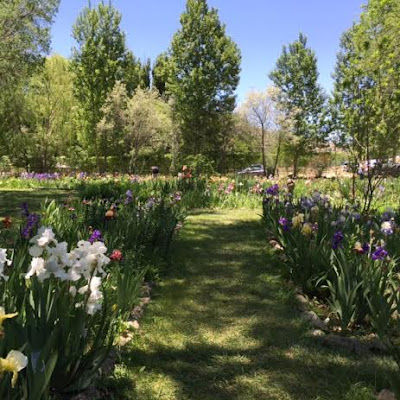I don't think I ever worried about filling up my retirement days. First, I just wanted to read and read, and read some more. However, the view from my reading chair kept beckoning me outside, and I began to spend more and more time in the yard.
The landscaping that came with our little adobe cottage was plain. Big trees and rocks out front; green lawn out back. Some of the trees fell down and some had to be taken out. A few remain and we are thankful for their shade.
The plain landscaping was little trouble, but I like flowers. So I added some.
And some more...
... and "some" hollyhocks.
Out back, we added a flock of chickens and a plain little shed to house them. That plain little shed was no trouble until the roof started sagging. And we didn't like looking at it from our shady patio.
It only took us a couple of weeks of sweaty summertime work to make a big change to that chicken house. Bill ripped off the saggy roof (to the consternation of the hens who were sitting the chicken house attic nests at the time), and put down new plywood, roofing paper, flashing, and shingles.
I painted and embellished.
 |
| Windchime/door knocker/flower arrangement |
A faux window box, propped up by a broken chair
that was brought back to life with a little spray paint.
Window box detail, after a week or so:
The flowers are starting to recover from being transplanted.













































